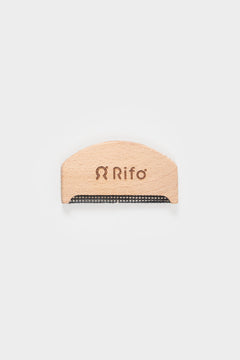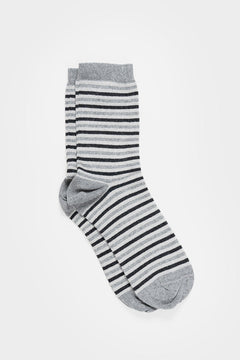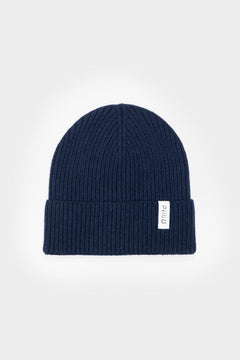The profession of cenciaiolo, the artisan who selects textile scraps and waste for recycling, is an old tradition that has existed in Prato for over 100 years. The practice of recycling textile material initially had nothing to do with sustainability, but rather it was common sense to not waste the already existing material that still had potential. It was about creating a more cost-effective textile product compared to new ones, especially in the case of fibers like wool and cashmere.
This concept has always fascinated us. From the beginning, Rifò has set the goal of transforming waste into new resources, and this is why we value this unique and ancient tradition. The work of the cenciaioli seems almost incredible today, in the world of artificial intelligence, big data, and automation.
Can a machine ever replace this activity?
In this blog article, we will explore why the profession of the cenciaiolo is irreplaceable by machines and how technology can support and enhance this traditional craft.

How does a cenciaiolo recognize the composition of old garments?
First and foremost, it's all about touch. The skilled cenciaiolo's hands assess the softness of the fibers, giving them a clue about the possible material they're dealing with.
Then comes the tear. A small cut, and teeaarrr. If the material doesn't tear smoothly, it likely means that a synthetic fiber is present, making the structure denser and less fluid.

Next comes the lighter, the quintessential tool of the cenciaiolo. By setting small fiber scraps on fire and studying their reaction, the cenciaiolo can distinguish the different types of fiber.
Synthetic fibers produce a shiny bead-like melting plastic when burned. They burn briefly and quickly extinguish.
Animal fibers, such as wool, tend to self-extinguish and leave a charcoal-like residue on the hands.
Plant-based fibers, like cotton, burn slowly and emit black smoke.

Finally, the smell of burning fibers serves as confirmation. Animal fibers have the odor of burning hair, while plant-based fibers like cotton smell like burnt paper and cellulose, and synthetic fibers give off the distinct smell of burning plastic.
Automatic recognition of textile fibers: the state of the art
Mechanized identification of textile fibers now takes place through optical fiber and scanning using infrared rays.
These technologies are still relatively new for this specific industrial application, which is why they are currently in an experimental phase. In the field of textile recycling, there are not many cases where they were fully implemented.
We consulted the professionals at Tecnotex in order to fully comprehend what these technologies are capable of and the extent to which the work of the cenciaiolo could be replaced by an automated system. Tecnotex, a private research institute accredited by the Ministry of Education, Universities, and Research (MIUR), works to boost technological innovation and corporate competitiveness.

While these technologies were not employed for textile waste recognition, they are certainly capable of distinguishing:
- Color
- Composition
- Structure. For example, it can distinguish weather a material is a knitted garment or a woven fabric. This is significant as it determines the ease of recycling and the quality of the recycled end product. Due to their more flexible structure, knitted items are easier to recycle in comparison to woven fabrics.
Based on these criteria, machines are capable of sorting the textile scraps and creating piles, which can then be directly sent to facilities responsible for shredding and transforming them into new yarn.

What machines will never recognize
Infrared optical recognition technologies are known to produce advanced results. So, why is the sorting of fibers for recycling still entrusted to manual labor?
Beyond objective data like color, composition, and structure, there are pieces of information that only the human mind can decipher.
First, the sorting for second-hand clothing
When textile waste collected from urban bins or other sources of supply arrives at the numerous sorting facilities in Prato's textile district, the first task is to select valuable items that can be resold as vintage clothing.
In general, this sorting process manages to absorb about 70% of what ends up in the bins. We talked about the journey of textile waste in Italy here in 2021.

Only a cenciaiolo can distinguish what can be reused because it possesses a value that goes beyond technical characteristics, such as the brand, design, or any other aspect to be taken into consideration.
In this regard, an important clarification is worth making. In the Extended Producer Responsibility (EPR) regulation, included in the European Circular Economy Package of 2018, which must be implemented by each member state by 2030, reuse is specifically encouraged over recycling, as it represents the form of circular economy with the lowest negative impact.
Removing accessories and other fibers, a precise task
After sorting what is reusable from what is not, it is necessary to prepare the waste so that it can be managed for recycling, whether this operation is carried out by hand or by machine.
In short, it is necessary to remove all accessories in used garments: buttons, labels, zippers, seams, etc.
In this case, the work of the cenciaiolo is essential. It is indeed a meticulous job that can also involve very small parts of a garment.
An example? Removing what is colloquially called the "gommino" (elastic ribbing), a non-recyclable elastic thread often found at the lower end of a knitted garment, in the ribbing, which provides elasticity and ensures that the knit fits properly around the hips.

Recognizing this tiny detail and, above all, removing it is certainly an operation that a machine cannot carry out.
In this regard, the technicians at Tecnotex explain that artificial intelligence is making great strides, and for this reason, it is likely that technology capable of catching even the very small, fragmented, and non-standardizable elements may come to the market, at least in terms of recognition. However, when it comes to removing them while producing the least possible waste, the road ahead is probably still long.
How can technology help the textile recycling process?
Current infrared technologies are good for fiber-based selection of fabrics and old garments. From this perspective, they would only be needed in a subsequent phase after the initial sorting by the cenciaiolo.
Using them would reduce the cost of second and third manual sorting and would mainly impact less valuable fibers such as cotton.

As a matter of fact, the cost of recycled material is primarily justified by the sorting and processing. In the case of cashmere and wool, where the value of virgin raw materials is high, manual sorting remains sustainable and helps reduce the margin of error and imprecision of the machine. In the case of cotton, however, these costs contribute to making this recycled material economically less accessible.
The case of the textile recycling hub in Prato
To date, we are aware of only one case in Italy where infrared technology will be used to select textile waste: the textile waste recycling hub that Alia, the local environmental waste management agency, is preparing to test in Prato by June 2026.
In view of the gradual implementation of the EPR, which also brings with it the obligation for municipalities to separate textile waste, this large sorting center will receive urban textile waste that has already undergone initial regional sorting, and then release waste that can be directly allocated to the subsequent shredding phase.

As Nicola Ciolini, the president of Alia, told us, the annual textile waste in the Tuscany region amounts to approximately 20,000 tons of post-consumer waste (used clothing), in addition to 14,000 tons of pre-consumer industrial textile waste.
Conclusion
In conclusion, it seems that something is slowly changing, and we perceive that even at the institutional level, there is a growing awareness of the need to fight against waste, against commercial goods that quickly transform into waste to be destroyed, and against the inaccurate idea that producing new raw materials costs less than recycling what already exists.
Finally, an approach seems to be emerging that takes into consideration the hidden and long-term costs of those consumer goods. These are both environmental and social costs that go beyond those related to the profits of major players.
If this process of change in the textile field involves reuse and recycling, the profession of the cenciaiolo takes on a whole new and contemporary value - an essential figure to continue doing precise and truly anti-waste work. In conclusion, the work of the cenciaiolo gives us hope that the human mind can remain irreplaceable by a machine.








